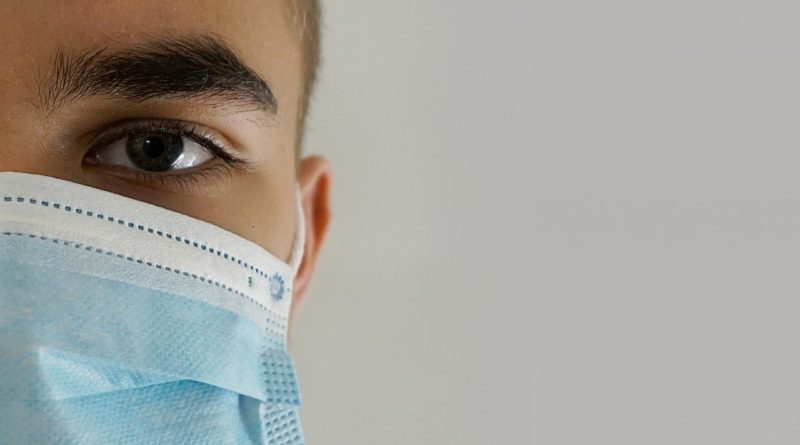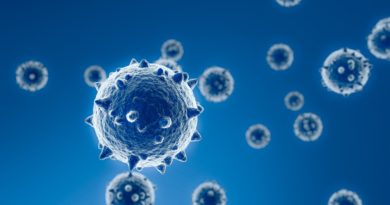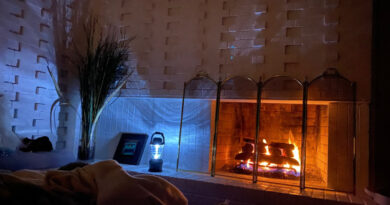Deaf Community Struggles to Communicate in Masked Up World
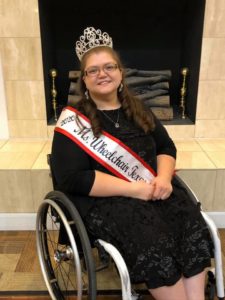
Shawnett Viani is used to advocating for herself and others – she’s this year’s Ms. Wheelchair Texas, and also volunteers with To Be Like Me, an organization aimed at disability awareness and fostering compassion.
But since the pandemic took hold of the country – and especially after the Centers for Disease Control and Prevention recommended wearing face masks – she’s found herself doing a lot more advocating.
Viani is deaf. And like everyone, she wants to keep herself safe, and others. But when you rely on lip-reading and facial expressions in conversation, and people are wearing a mask, it can be isolating.
“I’ve been trying to urge the county officials all over Texas of the importance of having both closed captions and ASL interpreters at all public meetings and televised (including the news) events,” she said. “I have also been trying to educate the importance of all our emergency responders (cops, medical professionals, dentists, EMS) the importance of being able to see your face during communicating with people with hearing loss and other disabilities.
“All of us rely on seeing your face.”
Viani said that being able to see facial expressions is how most of the deaf community understands tone – think of it as a change in pitch or pace when you hear someone speaking or reading.
“A lot of able-bodied people don’t realize that their hearing communication is so much more than just hearing the voices,” she explained. “It’s tone, pitch, length of sounds, expressions, and hand gestures. Without one or all; spoken word is hard to understand and hard to bear.”
“It’s a vital part of the deaf community because I was trained to read lips in speech therapy,” agreed T.J. Smelko, who also volunteers with To Be Like Me, which is based in Highland Park United Methodist Church’s Tolleson Family Activity Center. “Covering mouths makes the speech sound mumbled so it’s important to clarify the speech understanding with lip reading. Sign language helps as well.”
“All of us rely on seeing your face.” – Shawnett Viani
Molly Craig said that the masks and other best practices regarding social distancing (like sending only one person on an errand that requires interacting with the public) do make communication difficult for her, too.
“I usually have conversations with several co-workers a day, but I’ve given up trying to do that with masks on,” she said. “It’s especially difficult in public spaces because limitations often mean only one person can go into stores, which means I can’t rely on my boyfriend to ‘translate’ for me.”
But even though it makes communication difficult, all three said they knew the masks were important – important enough that the communication issues it raises for them are outweighed by the benefits.
“I do believe that, and most deaf people I know believe that too,” Craig said. “Deaf people have been adapting for years to situations like this and we will continue to do so.”
“I have lupus with my physical disability and basically have no immune system. I rely on face masks all the time,” Viani said.
Craig said that in addition to Viani’s suggestions of making sure government meetings and press conferences had both closed captioning and sign language, there is also a pretty simple way to make sure you can communicate with anyone you come into contact with – even if they can’t hear you.
“The easiest way, short of learning to sign, is to use either their phones to type out what they need to say or to use pen and paper. And have patience, for sure,” she said.
Transcription apps can also help, but can be hampered when the speaker is wearing a mask, unless they speak very clearly.
But Viani and Smelko said there is a potential third way that has been making the rounds on social media – a mask with a clear window that allows the wearer’s mouth to be seen.
“I have heard some people are making clear masks so the lip movements can be seen,” Smelko said.
Some are making their own – tutorials can be found online, and at least one person is already making them and is crowdfunding her production.
Elizabeth Gorman, a speech therapist in Dallas, is making her own so she can get back to work.
“I want to go back to work face to face with my kids, safely. Masks often frighten young children. Learning does not happen when fear is present,” she said. “Also, when we communicate, many cues for understanding sounds and meaning come through the eyes (looking at the mouth) as well as the ears. I want to be as effective a therapist as possible.”
Undeterred by the fact that she is also learning to sew, Gorman said she is trying to make one, even though it’s a bit of trial-and-error.
“In making them, I have never really used a machine before so I am figuring everything out,” she said. “I have not yet tried wearing it for a long time. I am not sure about ‘fogging up’ or moisture from breathing.”
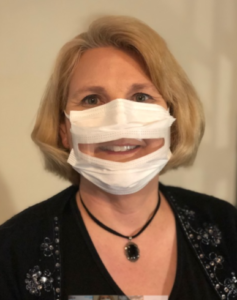
Only one company is mass-producing masks with a window. Dr. Anne McIntosh, founder and CEO the North Carolina-based SafeNClear.com, said that demand for her company’s “Communicator” mask has been so overwhelming that they’ve had to stop taking orders temporarily so they can fill the ones they already have.
“The demand started picking up around October 2019 but we were able to manage the demand-supply. However, in January 2020, whenever China began shutting down their factories due to COVID-19 (where 94% of all masks were made), the overall production of masks began to be impacted,” she explained. “That was a big punch in the mask industry.
“A second punch occurred whenever COVID-19 went global and countries began to need more mask protection, especially for front line medical personnel,” she added. “We are now seeing a third punch, if you will, with businesses, churches, grocery stores (all segments of society that do not normally use mask) requiring masks. Bottom line: no mask manufacturer is able to keep up with the demand.”
“We anticipate that getting ourselves out of this hole will take time.”
McIntosh said that they’re triaging orders right now to make sure that medical staff, first responders, and sign language interpreters on the front lines have them first.
“We are working hard to keep their orders filled,” she said. “We have been on backorder twice in 2020 already and each time, we are able to fill the orders within a month.”
McIntosh said she has been hearing from customers – and would-be customers – about the need for the mask right now.
“We hear from deaf and hard of hearing doctors, nurses, veterinarians who say they need masks that will enable them to lipread so they can do their jobs,” she said. “We have ASL interpreters who need to wear mask protection so they can do their jobs interpreting for the deaf.
Deaf people are so reliant on lipreading; some deaf people are now required to work in environments where mask use is mandatory and they are having trouble understanding their colleagues. Communication is essential for everyone; we need to provide inclusion and accessibility for everyone.”
Viani said she felt that clear masks would help considerably – especially in a retail, restaurant, or medical setting, and among first responders.
“Lack of communication causes chaos and confusion and frustration which in my experience results in people walking away from me, taking off their mask so I can understand and putting myself and the person plus others at risk by doing so,” she said.
“It’s definitely two public health issues and somehow we are allowing people who are able-bodied decide for us which one is more important,” she added. “Lives are still at risk either way.”

